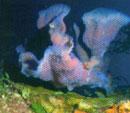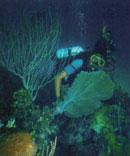EXPOBUCEO 2004
Experts from around the world will take an in-depth look at the Cuban environment and will share scuba diving experiences this summer during EXPOBUCEO 2004, scheduled from June 29 through July 1 in Varadero, some 89 miles east of Havana, and in the Zapata Peninsula.
This is a perfect setting for Cuba's tourism authorities to boost travel opportunities among nature lovers and scuba diving buffs.
The meeting draws professionals, representatives of local nautical companies, members of diving schools from all around the globe, PR experts, travel agents and journalists specialized in this particular topic.
This time around, Dr. Miguel Alejandro Figueras, an advisor to Cuba's Tourism Minister, will dictate a lecture entitled "Current Situation and Trends of Scuba Diving in Cuba."
In the course of the event, attendants will hear reflections on the development of immersions in the Caribbean, including the views of Catherine Matachiera, chairwoman of Diving Adventure Company, and from other boldface names in the industry.
Some of the most anticipated activities are the daytime immersions in the area of Caleta Buena, right in the Zapata Peninsula and not far from the Bay of Pigs, that treasures huge and well-preserved wetlands.
This year's EXPOBUCEO will take time to assess Cuba's possibilities in this sport and recreational activity. Participating foreigners will speak about their experiences and views on the practice of this exciting modality.
Averaging over 100,000 immersions every year by nearly 25,000 divers from around the world, Cuba is destined to become one of the globe's most sought-after destinations among seekers of hands-on rest and relaxation.
Scuba diving ranks high on the list of choices given Cuba's features as an island hedged with gorgeous and well-preserved sites.
Only half a dozen Caribbean islands feature scuba diving as their top tourist product, luring roughly three million vacationers to them every year. Cuba welcomes approximately a couple of million trippers.
Back in the year 2000, there were six million certified divers in the world. That figure will reach ten million in 2005. The sector reaped $6 billion in 1998 and is expected to churn out $11 billion next year.
Another interesting figure is that between three and four million divers travel overseas at least once every year to make immersions somewhere else.
Among Caribbean nations with longstanding history in this field, the Bahamas, Aruba, Bonaire, Grand Cayman and Turks Islands are some of the major standouts.
Cuba, for its part, counts on crystal-clear waters, great visibility, plenty of things to see, excellent sea bottoms and strict safety standards.
Cuba got its big break in scuba diving back in the 1970s on the southwest side of the country, off the waters of the Isle of Youth. In 2000, the island nation had logged 100,000 immersions by more than 25,000 divers.
Local tourism authorities hope to add up 100,000 divers over the next five years as it makes plans to put more facilities and increase its fleet of boats.




































































